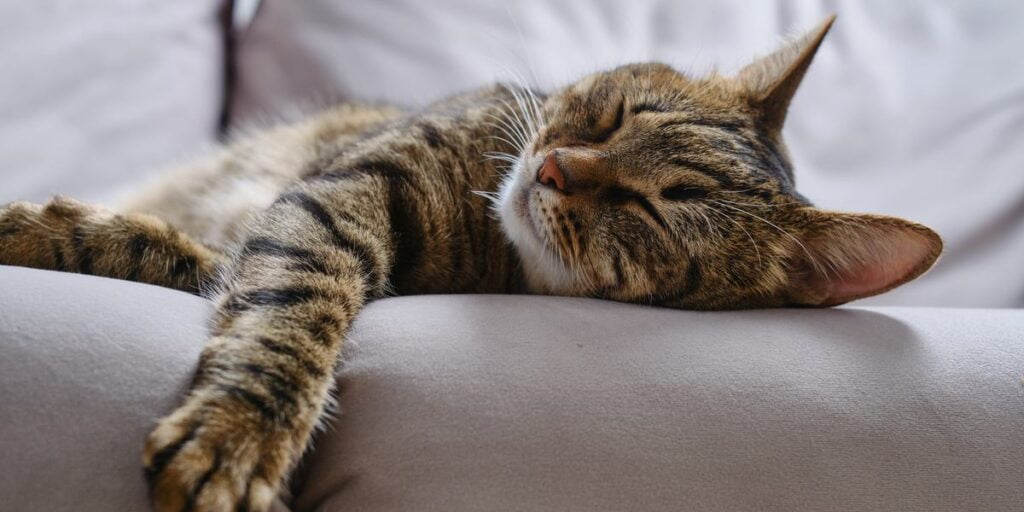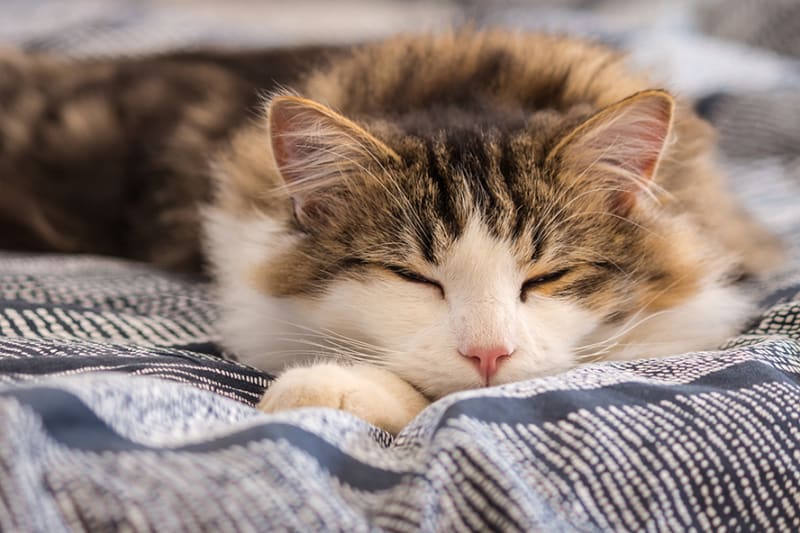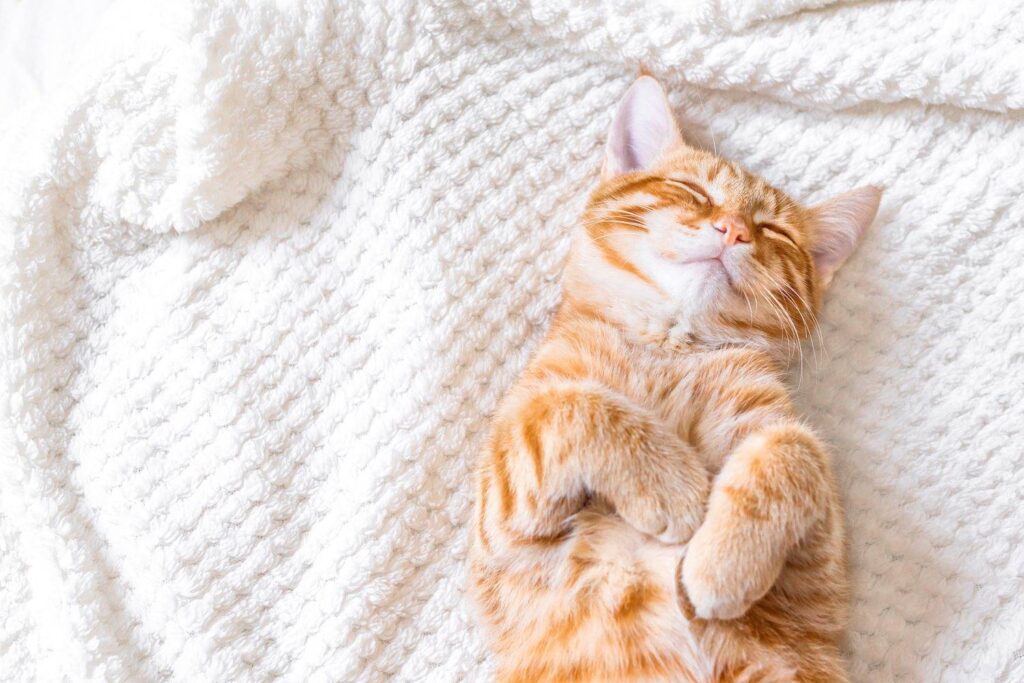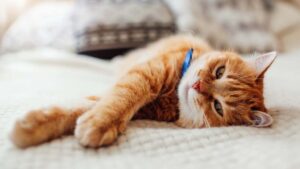How Much Do Cats Sleep In Their Life

As cat owners, we all know how much our pets love to sleep. It’s not uncommon to find them snoozing in the sun, curled up in a cozy spot, or even dozing off mid-play. But have you ever wondered just how much cats actually sleep, and what’s considered normal for them?
While it may seem like cats are sleeping all the time, there’s more to it than meets the eye. Just like humans, cats’ sleep needs can vary based on a range of factors, such as age, health, and mood. And, as it turns out, there are some fascinating facts about kitties and their napping habits that you might not know about.
Whether you’re a new cat owner or a seasoned pro, understanding your cat’s sleeping habits is crucial for keeping them happy and healthy. In this article, we’ll explore everything you need to know about how much cats sleep in their lifetime, from kittens to seniors.
The Sleeping Habits of Cats
Cats are well-known for their love of sleep, often spending a significant portion of their day napping. However, it’s not just a matter of laziness or boredom; cats have a natural instinct to conserve energy so that they’re ready to pounce on prey whenever the opportunity arises.
This is especially true for wild cats such as lions and tigers, whose hunting patterns are primarily nocturnal. Even domesticated cats still display many of the same behaviors as their wild cousins, including sleeping for long periods during the day.
Kitten Sleep vs Adult Sleep

Just like humans, cats have different sleep needs depending on their age. Kittens, in particular, require a lot of sleep as their bodies and brains are growing and developing at a rapid pace. Newborn kittens may sleep up to 22 hours a day, while older kittens typically sleep around 16 hours a day.
As they mature into adults, cats will gradually reduce the amount of time they spend sleeping, although they will still require more sleep than most other animals.
How Many Hours a Day Do Cats Sleep?
On average, cats sleep for about 15 hours a day, although some cats may sleep for as much as 20 hours within a 24-hour period. However, it’s important to note that each cat’s sleep needs are unique, and can vary depending on various factors such as age, health, and personality.
For example, older cats may sleep more than younger cats, while cats with certain health conditions may need more or less sleep than their healthy counterparts.
Factors That Affect a Cat’s Sleep
Aside from age and health, there are several other factors that can affect a cat’s sleep patterns.
One of the most important is their environment. Cats prefer to sleep in quiet, dark spaces where they can feel safe and secure. If there are too many distractions or disruptions in their environment, they may have trouble sleeping.
Additionally, an outdoor cat may require more sleep due to increased physical activity, while an indoor cat may sleep for more extended periods due to a more sedentary lifestyle.
The Importance of Quality Sleep for Cats
Just like humans, cats require quality sleep in order to maintain their physical and mental health. Without enough sleep, cats may become irritable, lethargic, and even ill. Good sleep habits can also help prevent behavioral problems such as aggression, anxiety, and excessive grooming.
To ensure that your cat gets enough quality sleep, provide them with a comfortable and secure sleeping space, keep their environment quiet and free from distractions, and establish a regular sleep routine.
Health Issues That Affect a Cat’s Sleep

There are several health conditions that can affect a cat’s ability to sleep. Chronic pain, such as arthritis or dental issues, can make it difficult for cats to get comfortable and fall asleep. Respiratory problems, such as asthma or allergies, can also interfere with sleep by causing coughing, wheezing, or difficulty breathing.
If you notice that your cat is sleeping more or less than usual, or is having trouble falling asleep, it’s important to bring them to the vet for a checkup to rule out any underlying health issues.
Sleeping Positions of Cats
Just like humans, cats have their own unique sleeping positions. Some cats prefer to curl up in a ball, while others like to stretch out and take up as much space as possible. Some cats may even sleep on their backs or on their stomachs.
The position a cat sleeps in can provide insight into their personality and mood. For example, a cat who sleeps with their paws tucked under their body may be feeling anxious or insecure, while a cat who sleeps on their back with their belly exposed is likely feeling relaxed and comfortable.
Cats who sleep in a ball-like position with their paws tucked under their body are known as “loaf” or “bread” cats. This position is popular among cats because it allows them to conserve heat and feel protected. It’s also a great way for them to quickly get up and be on alert if they need to.
Another popular sleeping position for cats is the “donut” position. This is when cats sleep with their heads on their paws and their body curled up into a circular shape. This position is similar to the loaf position, but with a slightly more relaxed twist.
Some cats may prefer to sleep with their legs stretched out behind them or even on their sides. Cats who sleep in these positions are usually very relaxed and comfortable, and may even snore softly.
Overall, cats can sleep in a variety of positions, and each position can tell us something about their personality and how they’re feeling. As pet owners, it’s important to observe our cats’ sleeping positions and behavior to better understand their needs and overall wellbeing.
Cat Napping Habits
Cat napping habits can vary depending on the individual cat, as well as their environment and routine. For example, an indoor cat who spends most of their day lounging around may take more frequent naps than an outdoor cat who spends their time exploring and hunting.
It’s also common for cats to take “cat naps” throughout the day, which are short naps that last anywhere from a few minutes to half an hour. These naps can occur at any time of day and help cats recharge their energy levels.
Interestingly, cats are able to enter a light sleep state very quickly, which is why they are able to nap for short periods throughout the day. This is due to their physiology, which allows them to quickly fall asleep and wake up when necessary.
In addition to conserving energy, cat napping habits can also be a sign of relaxation and contentment. Cats who feel safe and secure in their environment are more likely to take frequent naps throughout the day. On the other hand, cats who are anxious or stressed may have trouble napping and may appear more restless during the day.
Overall, cat napping habits are an important aspect of a cat’s daily routine and can provide insight into their overall health and wellbeing.
Conclusion
In conclusion, cats are known for their love of sleep, often sleeping for up to 16 hours a day. Understanding your cat’s sleeping habits and needs is important for ensuring their overall health and wellbeing. Factors such as age, health, and environment can affect a cat’s sleep patterns.
Additionally, paying attention to your cat’s sleeping positions and napping habits can provide insight into their personality and mood. By providing a comfortable and safe sleeping environment for your feline friend, you can help them get the restful sleep they need to live a happy and healthy life.


